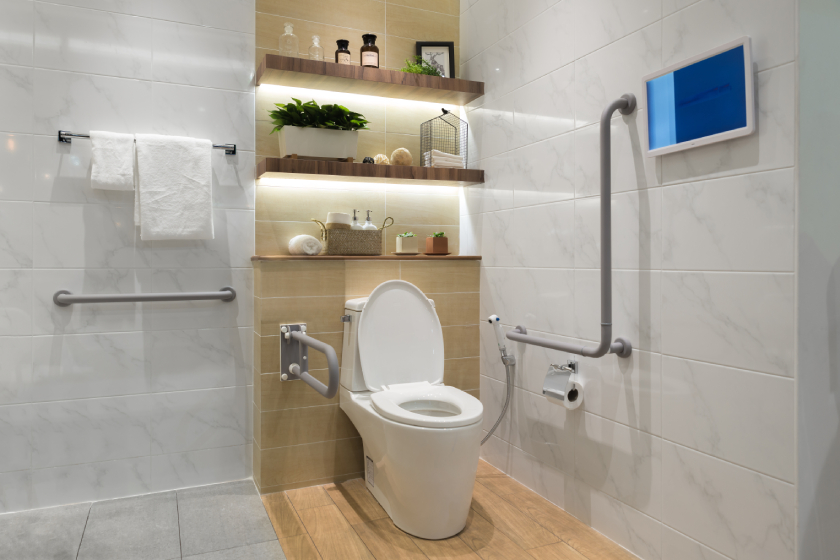As elderly individuals progress through their journey with Alzheimer’s or other forms of dementia, everyday tasks that were once routine can become challenging. To cater to these unique needs, memory care communities in York, PA, are thoughtfully designed, paying special attention to areas like bathrooms that can pose a high risk of injury.
By incorporating dementia-friendly features in bathroom designs, these communities not only promote safety and ease of use but also strive to maintain the dignity and independence of their residents. Let’s delve into the key aspects of these designs and understand their importance in memory care communities.
Ease of Navigation and Accessibility
A key aspect of dementia-friendly bathroom design is its layout, which is made simple and intuitive to navigate. Clear paths are maintained to and from the toilet, sink, and shower area, eliminating potential tripping hazards. Shower stalls are typically level with the floor for easy access, and toilets are often higher than standard, reducing the need for residents to bend or stoop. Memory care communities make a conscious effort to use contrasting colors to differentiate the toilet seat, grab bars, and towels from the walls and floor, which helps residents recognize these elements easily.
Safety Features
Incorporating safety features is crucial to reducing the risk of falls and injuries. Bathrooms in memory care communities are equipped with sturdy, well-placed grab bars for support when moving around. Non-slip surfaces are used extensively, from the flooring to the shower stall, reducing the risk of slips in a wet environment. Automatic sensors for lighting ensure the area is always well-lit when in use, eliminating the need for residents to find and operate switches. In addition, emergency call buttons are installed within easy reach, allowing residents to call for assistance if needed.
Promoting Independence
Promoting independence in daily tasks is an integral part of care for dementia patients. To facilitate this, a memory care community incorporates features in their bathrooms that allow residents to perform tasks on their own as much as possible. For instance, sinks and mirrors are set at an appropriate height, and easy-to-use lever taps replace conventional twist knobs. Clearly labeled hot and cold faucets help prevent confusion, while temperature-controlled water systems prevent scalding accidents. These design elements not only foster self-reliance but also contribute to a sense of dignity and normalcy for the residents.
Respecting Privacy
While safety and functionality are paramount, it’s equally important to design these spaces with respect for the individual’s privacy. Many memory care communities use creative solutions to balance the need for privacy with the necessity of occasional staff supervision. One way is by installing curtains or screens that can provide a visual barrier but can be easily moved when help is needed. This approach respects the resident’s personal space while ensuring they can receive assistance promptly when required.
The thoughtfully designed bathrooms in memory care communities in York, PA, highlight the holistic approach these communities take towards dementia care. By incorporating user-friendly, safe, and dignified features in their design, these bathrooms not only serve a practical purpose but also contribute significantly to the overall quality of life of the residents. The commitment to making even the smallest details dementia-friendly shows the dedication of these communities in ensuring a comfortable, respectful, and supportive environment for their residents.







